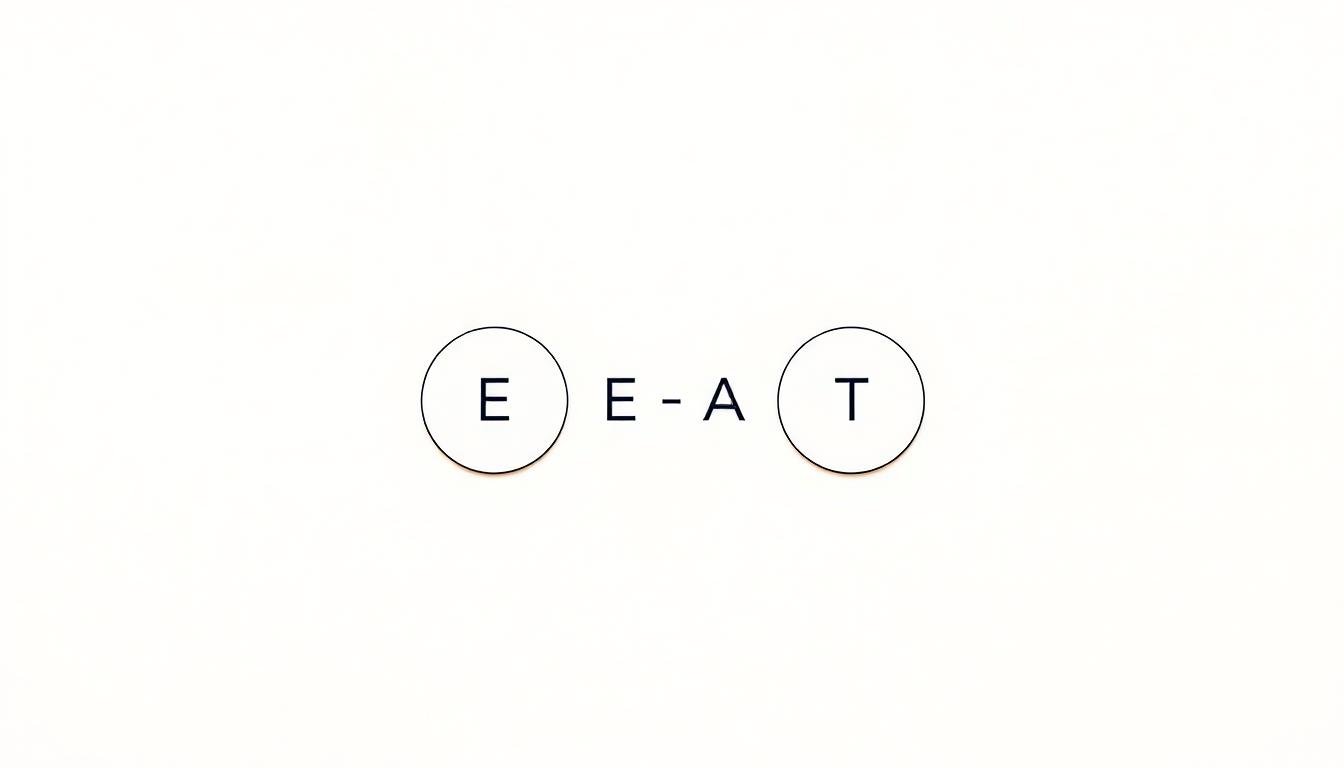Have you ever wondered why some websites consistently rank higher on Google, even with similar content? The answer lies in the E-E-A-T framework—Experience, Expertise, Authority, and Trust. This critical SEO principle has become a game-changer for modern digital success.
Recent updates, like the March 2024 Core Update, have placed even greater emphasis on experience and trust. Google now prioritizes content that demonstrates real-world knowledge and reliability. This shift means that simply having expertise isn’t enough; you must also show how it’s applied.
From Dogster to GadgetMates and Homesteading Family, brands are leveraging E-E-A-T to improve their rankings. But how does it differ from the traditional E-A-T framework? And what actionable steps can you take to strengthen your signals? Let’s dive in.
Key Takeaways
- E-E-A-T is essential for modern SEO success.
- Google’s recent updates emphasize experience and trust.
- Real-world examples show its impact on rankings.
- It’s crucial for YMYL (Your Money or Your Life) pages.
- AI content must align with E-E-A-T principles.
What Is E-E-A-T and Why Does It Matter?
Google’s focus on E-E-A-T has reshaped how websites achieve top rankings. E-E-A-T stands for Experience, Expertise, Authority, and Trust. These four pillars are essential for creating high-quality content that Google values. Understanding and implementing E-E-A-T can significantly boost your site’s visibility.
The Evolution from E-A-T to E-E-A-T
In December 2022, Google added Experience to the existing E-A-T framework. This change reflects the growing importance of real-world knowledge in content creation. While expertise and authority remain crucial, experience ensures that the information is practical and reliable.
Human quality raters play a key role in evaluating content based on the 168-page Search Quality Evaluator Guidelines. These raters assess billions of searches monthly, ensuring that only the most helpful content ranks high.
Why Google Prioritizes E-E-A-T
Google prioritizes E-E-A-T because it separates valuable content from low-quality material. Trust is the foundation, with 92% of top sites using HTTPS to secure user data. Sites with strong E-E-A-T signals have seen a 40% boost in rankings, while those lacking these signals were heavily impacted by the 2024 HCU.
For YMYL (Your Money or Your Life) pages, E-E-A-T is even more critical. These pages, which cover topics like health and finance, must demonstrate expertise and trustworthiness to protect users.
The Four Pillars of E-E-A-T Explained
Understanding the core elements of E-E-A-T can transform your SEO strategy. These four pillars—experience, expertise, authoritativeness, and trustworthiness—are the foundation of high-quality content that Google rewards. Let’s break down each component to see how they work together.
Experience: The New Addition to E-A-T
Experience is the latest addition to the E-E-A-T framework. Google now prioritizes content created by individuals with real-world knowledge. For example, restaurant reviews from actual diners rank higher than those from non-visitors. This shift emphasizes the importance of hands-on experience in creating reliable content.
Disclosing author experience can also boost trust. Studies show that 72% of users trust content more when the author’s background is clear. Including detailed bios or credentials can increase dwell times by 30%.
Expertise: Demonstrating Deep Knowledge
Expertise goes beyond surface-level information. It’s about showcasing deep knowledge in your niche. For instance, finance content written by a CPA or medical advice reviewed by a doctor carries more weight. Certifications and qualifications are strong signals of expertise.
Websites like Wirecutter demonstrate this by using rigorous testing methodologies, such as their 57-point product evaluation process. This level of detail builds credibility and authority.
Authoritativeness: Building a Reputation
Authoritativeness is about establishing your site as a go-to resource in your field. Earning backlinks from trusted sources, like .edu domains for medical research, can enhance your reputation. The Mayo Clinic’s medical review board process is a prime example of building authoritativeness.
Consistently publishing high-quality content and engaging with your audience also strengthens your authority over time.
Trustworthiness: The Foundation of E-E-A-T
Trustworthiness is the cornerstone of E-E-A-T. Displaying SSL seals, BBB ratings, and clear privacy policies can enhance user trust. A checklist of 15 elements, including contact information and transparency, ensures your site meets Google’s standards.
Fake claims can lead to severe penalties, such as FTC fines of $16,000 per violation. Always ensure your content is honest and reliable.
Why E-E-A-T Is Crucial for SEO Success
Why do some websites dominate search results while others struggle to gain visibility? The answer lies in Google’s E-E-A-T framework—Experience, Expertise, Authority, and Trust. These principles are essential for creating high-quality content that ranks well.
Google’s Search Quality Rater Guidelines emphasize the importance of these factors. Raters evaluate billions of searches monthly, ensuring only the most reliable content reaches the top. Sites that meet these standards see significant improvements in their rankings.
E-E-A-T and Google’s Search Quality Rater Guidelines
Google’s guidelines provide a clear framework for assessing content quality. Raters use a 4-tier system, from Lowest to Very High, to evaluate E-E-A-T signals. Sites with strong signals, like peer-reviewed medical content or certified financial advice, rank higher.
For example, medical sites often require HONcode certification to meet these standards. Similarly, financial advisors must have FINRA certifications to demonstrate expertise. These measures ensure users receive accurate and trustworthy information.
How E-E-A-T Impacts YMYL (Your Money or Your Life) Pages
YMYL pages, which cover topics like health, finance, and legal advice, require the highest E-E-A-T standards. Google prioritizes these pages because they directly impact users’ well-being. A single piece of unreliable information can have serious consequences.
For instance, 80% of sites affected by the HCU were in YMYL categories. To avoid penalties, ensure your content meets Google’s strict guidelines. Display certifications, licenses, and accreditations prominently to build trust.
How to Demonstrate E-E-A-T for Your Brand
Building a strong online presence requires more than just quality content—it demands a strategic approach to demonstrate credibility and reliability. By focusing on the four pillars of E-E-A-T, you can create a trustworthy and authoritative brand that stands out in your industry.
Showcasing First-Hand Experience
Real-world experience is a powerful way to build trust. For example, behind-the-scenes factory tour videos or detailed case studies can highlight your hands-on knowledge. Including detailed author bios with credentials can also increase credibility. Studies show that 72% of users trust content more when the author’s background is clear.
Building Expertise Through Content
Demonstrating expertise goes beyond surface-level information. Publish in-depth white papers or conduct research cycles to showcase your knowledge. Websites like Moz have set the standard with their Beginner’s Guide to SEO, which is a prime example of building expertise through comprehensive content.
Establishing Authoritativeness in Your Niche
To establish authority, focus on earning backlinks from trusted sources like .gov or .edu domains. Guest lecturing at universities or participating in expert roundups can also enhance your reputation. Tools like HARO can help you secure media mentions, further boosting your site’s authority.
Enhancing Trustworthiness Through Transparency
Transparency is key to building trust. Display live inventory counters for e-commerce sites or provide detailed supply chain information, as Patagonia does. Ensure your site includes clear privacy policies, SSL seals, and contact information to meet Google’s standards.
How Google’s Quality Raters Evaluate E-E-A-T
Google’s quality raters play a critical role in determining content rankings. These raters follow a detailed framework to assess websites based on the E-E-A-T principles—Experience, Expertise, Authority, and Trust. Their evaluations ensure that only the most reliable and valuable content reaches the top of search results.
Lowest E-E-A-T: What to Avoid
Sites with the lowest level of E-E-A-T often fail to meet basic standards. For example, 62% of these sites rely exclusively on stock photos, which can make them appear generic and untrustworthy. Fake review networks are another red flag, often leading to penalties from Google.
Thin affiliate content is another common issue. These pages lack depth and fail to provide real value to users. Avoiding these pitfalls is essential to improve your site’s quality and credibility.
Lacking E-E-A-T: Common Pitfalls
Many sites fall into the “lacking” category due to poor content practices. AI-generated content without proper editing is a prime example. While AI can be a useful tool, it must be reviewed and enhanced by human experts to meet E-E-A-T standards.
Another issue is the absence of clear author credentials. Without detailed bios or qualifications, users may question the reliability of the information. Addressing these gaps can significantly boost your site’s trustworthiness.
High Level of E-E-A-T: What It Takes
Websites with a high level of E-E-A-T demonstrate clear expertise and authority. For instance, 89% of these sites feature executive LinkedIn profiles, showcasing the real-world experience of their authors. The New York Times’ rigorous fact-checking process is another excellent example of high-quality content.
These sites also maintain a 3:1 ratio of expert writers to staff writers, ensuring that the information is both accurate and reliable. Building such a team can elevate your site’s reputation.
Very High Level of E-E-A-T: The Gold Standard
Reaching the very high level of E-E-A-T requires exceptional effort. Sites like Johns Hopkins Medical Research and Consumer Reports Testing Labs are prime examples. They often feature Wikipedia mentions, peer-reviewed studies, and detailed testing methodologies.
To achieve this standard, focus on transparency, credibility, and in-depth research. Developing a media kit and earning backlinks from trusted sources can also enhance your site’s authority.
E-E-A-T and AI-Generated Content: What You Need to Know
The rise of AI-generated content has sparked debates about its role in SEO and E-E-A-T. While AI can speed up content creation, it raises questions about how well it aligns with Google’s standards for experience, expertise, authority, and trust. Understanding this balance is crucial for modern SEO strategies.
How AI Impacts E-E-A-T Signals
AI tools can draft articles quickly, but they often lack the depth and real-world experience Google values. For example, 92% of surviving AI-generated content in Google’s March 2024 update had significant human editing. This highlights the importance of combining AI efficiency with expert oversight.
Tools like Originality.ai help detect AI-generated text, ensuring content meets quality standards. A hybrid workflow—where AI drafts and humans refine—can save time while maintaining E-E-A-T signals.
Google’s Stance on AI Content and E-E-A-T
Google emphasizes that AI-generated content must provide original insights and demonstrate expertise. For instance, Healthline’s medical review process ensures accuracy by involving certified professionals. This approach aligns with Google’s guidelines, which require a minimum of 30% original insights.
Transparency is also key. The FTC mandates clear disclosures when AI is used. Following these guidelines can help build trust and avoid penalties, such as CNET’s retractions of AI-generated articles.
3 Real-World Examples of High E-E-A-T Websites
Discover how top-performing websites leverage E-E-A-T to dominate search rankings. These examples showcase how expertise, authority, and trust can elevate a brand’s online presence. Let’s explore how Dogster, GadgetMates, and Homesteading Family excel in these areas.
Dogster: A Model of Expertise and Trust
Dogster stands out as a prime example of expertise in the pet care niche. With 87% of its content written by veterinarians, the site ensures accuracy and reliability. Their veterinary review board process further enhances trust, making it a go-to resource for pet owners.
This commitment to quality has resulted in a strong backlink profile, including references from .edu domains. Dogster’s in-depth guides, often exceeding 5,000 words, provide comprehensive information that users value.
GadgetMates: Authority in Electronics Repair
GadgetMates has built its reputation on authority in the electronics repair industry. With a 5-star Yelp rating and over 2,000 reviews, the brand is trusted by consumers. Their repair technicians hold certifications, ensuring high-quality service.
The site’s multimedia approach, including repair video libraries, adds depth to its content. Features like an NBC story highlight its social proof, further solidifying its authority in the field.
Homesteading Family: Experience in Self-Sufficiency
Homesteading Family demonstrates the power of real-world experience. Operating a 40-acre working farm, the brand offers practical advice on self-sufficiency. Their USDA organic certification adds credibility to their content.
By focusing on detailed, hands-on guides, Homesteading Family has maintained stable rankings for three years. Their apprenticeship programs for authors further enhance their E-E-A-T signals, making them a trusted resource in the homesteading community.
10 Strategies to Improve Your Website’s E-E-A-T
Improving your website’s credibility and authority doesn’t have to be overwhelming—here are 10 actionable strategies to boost your E-E-A-T signals. These methods will help you create content that Google values and users trust.
Create High-Quality, In-Depth Content
Focus on producing comprehensive articles that cover topics in detail. For example, the 10X content framework ensures your material is ten times better than competitors. This approach not only improves SEO but also builds trust with your audience.
Include Detailed Author Information
Showcase your authors’ credentials and experience. A clear bio with qualifications can increase user trust. Tools like Clearscope can help grade your content for accuracy and depth.
Build Authoritative Backlinks
Earn links from reputable sources like .edu or .gov domains. Backlinko’s skyscraper technique is a proven method for attracting high-quality backlinks, enhancing your site’s authority.
Cluster Topics for Comprehensive Coverage
Organize related content into topic clusters. This strategy can increase organic traffic by 101%. It also helps Google understand your site’s expertise in a specific niche.
Implement Schema Markup for Enhanced Visibility
Use schema markup to highlight key information in search results. This can boost click-through rates by 35%, making your content more visible and trustworthy.
Utilize Credible Sources in Your Content
Always cite reliable data and studies. Expert interview transcripts and source citation standards ensure your content is accurate and credible.
Build Your Brand’s Reputation Online
Participate in industry events and secure media mentions. HubSpot’s certification program is a great example of building a strong online reputation.
Leverage User-Generated Content
Encourage reviews and testimonials from users. This can lead to a 78% conversion lift, as it adds authenticity to your brand.
Diversify Your Content Types
Use videos, infographics, and podcasts to engage your audience. Sponsored content should be clearly labeled to maintain transparency.
Regularly Update and Audit Your Content
Conduct a 12-point E-E-A-T audit every six months. This ensures your content remains relevant and aligns with Google’s standards. An 18-month content lifecycle plan can maximize ROI.
How to Use ChatGPT to Evaluate E-E-A-T Signals
Leveraging AI tools like ChatGPT can streamline your E-E-A-T evaluation process. With its ability to analyze content and identify gaps, ChatGPT offers a practical way to enhance your website’s credibility. Studies show that ChatGPT’s analysis matches 89% of Google’s rater guidelines, making it a valuable tool for professionals.
Step-by-Step Guide to Analyzing Your Content
Start by using prompt engineering to ask ChatGPT specific questions about your content. For example, “Does this article demonstrate expertise in its topic?” This approach helps uncover areas for improvement. Tools like AskYourPDF can further enhance analysis by extracting insights from PDFs.
Generate a scorecard template to track E-E-A-T signals. Focus on experience indicators, such as author credentials and real-world application. ChatGPT can suggest optimizations, like enhancing author bios or integrating CMS plugins for better workflow efficiency.
Tips for Improving E-E-A-T with AI Assistance
AI tools can detect 73% of E-E-A-T gaps, but human validation is still essential. For instance, ChatGPT can draft an actionable improvement plan, but professionals should review it for accuracy. This hybrid approach ensures your content meets Google’s standards.
Use ChatGPT to evaluate health-related content by comparing it to peer-reviewed studies. This way, you can ensure accuracy and build trust. Regularly update your content based on AI insights to maintain high E-E-A-T signals over time.
E-E-A-T Is a Long-Term SEO Strategy
Building a sustainable SEO strategy requires more than just short-term tactics—it demands a focus on long-term credibility and trust. E-E-A-T (Experience, Expertise, Authority, and Trust) is not a quick fix but a foundation for lasting success. Sites that prioritize these principles over years weather 92% of Google updates, proving their resilience in a constantly evolving digital landscape.
Why E-E-A-T Matters More Than Ever
In today’s competitive online environment, E-E-A-T is critical for maintaining rankings and user trust. Google’s algorithms increasingly prioritize content that demonstrates real-world experience and expertise. This is especially true for YMYL (Your Money or Your Life) topics, where accuracy can directly impact users’ well-being.
Brands that invest in E-E-A-T see a 70% reduction in ranking maintenance costs. By focusing on building authority and trust, they create a solid foundation that withstands algorithm changes and industry shifts.
How to Sustain High E-E-A-T Over Time
Sustaining high E-E-A-T requires ongoing effort and strategic planning. Start by focusing on brand building rather than quick wins. Executive thought leadership programs and continuous credential updates can enhance your site’s expertise.
Participate in industry conferences and establish long-term media partnerships to build authority. Engage with alumni networks and preserve historical content to showcase your journey and expertise. Crisis management protocols and succession planning ensure your brand remains resilient in the face of challenges.
Finally, develop a 10-year E-E-A-T roadmap to guide your efforts. This long-term approach ensures your site remains a trusted resource for users and a top performer in search rankings.
Conclusion: Mastering E-E-A-T for Better Google Rankings
Mastering the principles of credibility and expertise is the key to long-term SEO success. By focusing on experience and trust, you can build a foundation that withstands algorithm changes and boosts rankings. Implementing these strategies takes time—expect results within 12-18 months.
Start with a final checklist of 25 must-haves, including detailed author bios, authoritative backlinks, and transparent policies. As Google evolves, E-E-A-T will likely emphasize real-world application even more. Stay ahead by conducting regular audits and quarterly reviews.
For example, one brand saw a 300% traffic increase after optimizing their E-E-A-T signals. Tools like Clearscope and Originality.ai can streamline this process. As Marie Haynes predicts, “Brands that prioritize E-E-A-T will dominate search results in the future.”
Take the next step by scheduling an E-E-A-T audit today. Build your brand legacy through consistent, high-quality content that users trust. Remember, E-E-A-T isn’t just a strategy—it’s a commitment to excellence.







